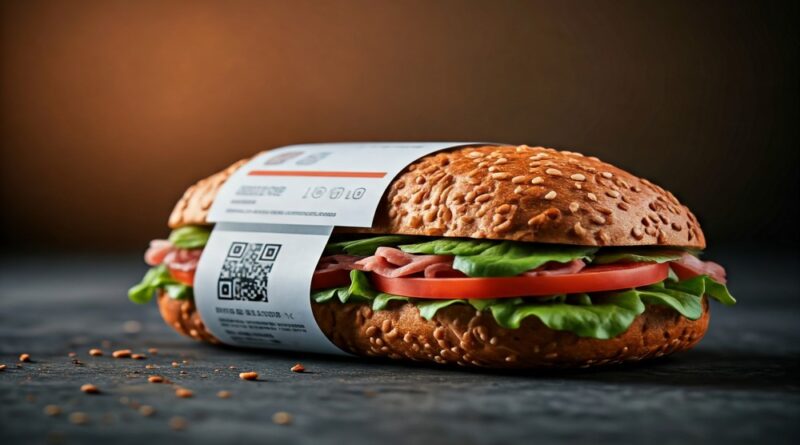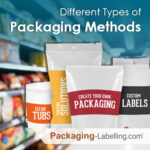What’s Driving Growth in the Smart Food Packaging Market?
The smart food packaging market has been gaining significant traction in recent years. As consumer preferences evolve and technology advances, the demand for intelligent and functional packaging solutions is on the rise. Smart food packaging not only enhances the shelf life of products but also provides valuable information about the condition and safety of the food inside. This article delves into the factors driving the growth of the smart food packaging market and explores the various trends shaping its future.
Technological Advancements
One of the primary drivers of growth in the smart food packaging market is the rapid pace of technological advancements. Innovations such as RFID (Radio-Frequency Identification) tags, QR codes, NFC (Near Field Communication), and smart labels have revolutionized how food packaging functions. These technologies enable real-time tracking of food products, ensuring transparency and traceability throughout the supply chain.
For instance, RFID tags can store detailed information about the food product, including its origin, date of production, and expiration date. Consumers can access this information with a simple scan, offering assurance about the product’s freshness and safety. Similarly, QR codes and NFC tags allow consumers to obtain detailed product information, enhancing their buying experience and building trust in the brand.
Increasing Consumer Awareness
Today’s consumers are more informed and health-conscious than ever before. There is a growing demand for transparency regarding the food they consume, particularly concerning its origin, nutritional content, and safety. Smart food packaging addresses these concerns by providing detailed information that can be easily accessed.
Smart packaging solutions such as freshness indicators and time-temperature indicators (TTIs) offer real-time information about the condition of the food. Freshness indicators change color to show whether the food is still fresh or if it has begun to spoil. TTIs monitor the temperature of the product throughout its journey, helping to ensure it has been stored under the correct conditions. This increased visibility helps consumers make informed decisions and enhances food safety, leading to greater trust in food products.
Growing Demand for Food Safety and Quality
Food safety and quality are paramount in the food industry. The rise in foodborne illnesses and contamination cases has underscored the importance of maintaining high safety standards. Smart food packaging plays a crucial role in ensuring food safety by providing real-time data about the product’s condition.
Intelligent packaging solutions, such as biosensors and chemical indicators, can detect the presence of harmful bacteria or changes in the chemical composition of the food. These technologies alert consumers and retailers to potential safety issues before the food reaches the end user, reducing the risk of foodborne illnesses and ensuring higher quality standards are maintained.
Sustainability and Eco-Friendly Packaging
As environmental concerns grow, there is a significant shift towards sustainable and eco-friendly packaging solutions. Consumers and regulatory bodies are increasingly pressuring companies to reduce their environmental footprint. Smart food packaging can contribute to sustainability by reducing food waste and improving the efficiency of the supply chain.
For example, by providing accurate information about the freshness and shelf life of products, smart packaging can help reduce food waste. Consumers are less likely to discard food prematurely, and retailers can better manage inventory, ensuring products are sold before they spoil. Additionally, smart packaging materials are often designed to be recyclable or biodegradable, further supporting sustainability goals.
Regulatory Compliance and Standards
The regulatory landscape for food packaging is becoming increasingly stringent, with governments and international organizations imposing stricter guidelines to ensure food safety and quality. Smart food packaging helps manufacturers comply with these regulations by providing detailed product information and tracking capabilities.
In many regions, food packaging must now include information about allergens, nutritional content, and storage instructions. Smart packaging can automate and streamline this process, ensuring compliance with minimal manual intervention. This not only reduces the risk of non-compliance but also enhances the overall safety and quality of the food products.
Market Trends and Innovations
Several trends and innovations are shaping the smart food packaging market. One notable trend is the integration of Internet of Things (IoT) technology. IoT-enabled packaging can communicate with devices such as smartphones, providing real-time updates about the product’s condition and enabling smart home applications.
Another innovation is the development of active packaging materials that can interact with the food to extend its shelf life. These materials release preservatives or absorb oxygen, helping to maintain the freshness of the food for longer periods. Edible packaging is also gaining traction, offering an eco-friendly alternative that reduces waste.
Moreover, the use of blockchain technology in smart food packaging is becoming more prevalent. Blockchain provides an immutable record of the product’s journey from farm to fork, enhancing traceability and building consumer trust. This technology can help prevent food fraud and ensure authenticity, which is particularly important for premium and organic products.
Challenges and Opportunities
Despite the numerous benefits, the smart food packaging market faces several challenges. High costs associated with the development and implementation of smart technologies can be a barrier for smaller companies. Additionally, consumer concerns about data privacy and the security of smart packaging solutions need to be addressed.
However, these challenges also present opportunities for innovation and growth. Companies that can develop cost-effective and secure smart packaging solutions are likely to gain a competitive edge. Moreover, as technology becomes more affordable, adoption rates are expected to increase, further driving market growth.
Market Outlook
As per Transparency Market Research, the smart food packaging market outlook for 2032 is highly promising. The global industry was valued at US$ 4.8 Bn in 2023. It is projected to grow at a CAGR of 5.8% from 2024 to 2032 and reach US$ 8.0 Bn by 2032.
Conclusion
The smart food packaging market is poised for substantial growth, driven by technological advancements, increasing consumer awareness, and a growing emphasis on food safety and sustainability. As the market evolves, innovations such as IoT integration, active packaging materials, and blockchain technology will continue to shape its future. Companies that embrace these trends and overcome the associated challenges will be well-positioned to thrive in this dynamic and rapidly expanding market.
Read More: https://www.transparencymarketresearch.com/smart-food-packaging-market.html
This article has been submitted bySandeep gade
.



